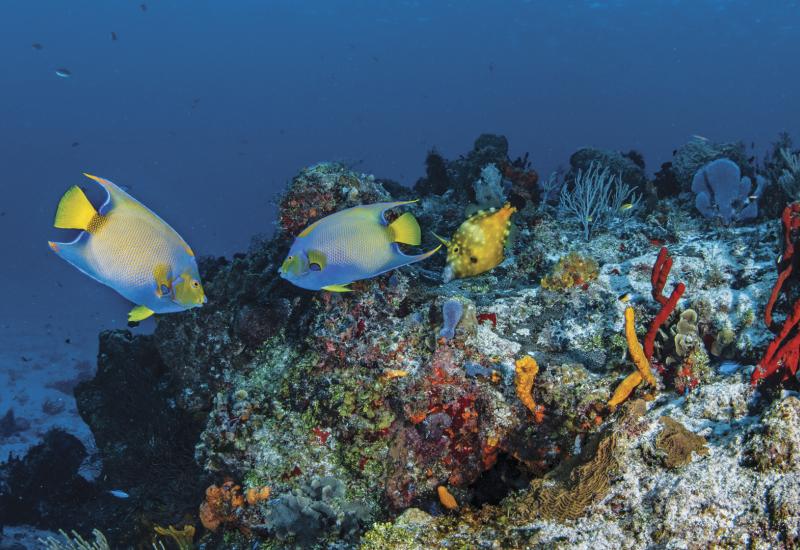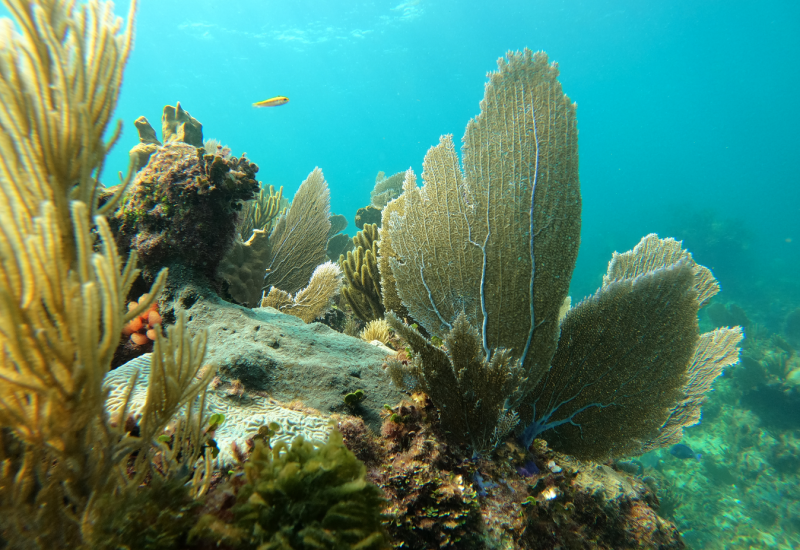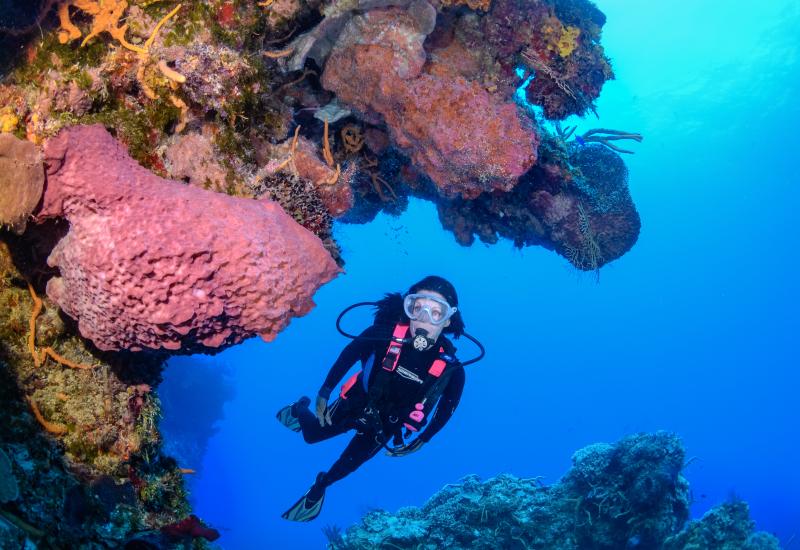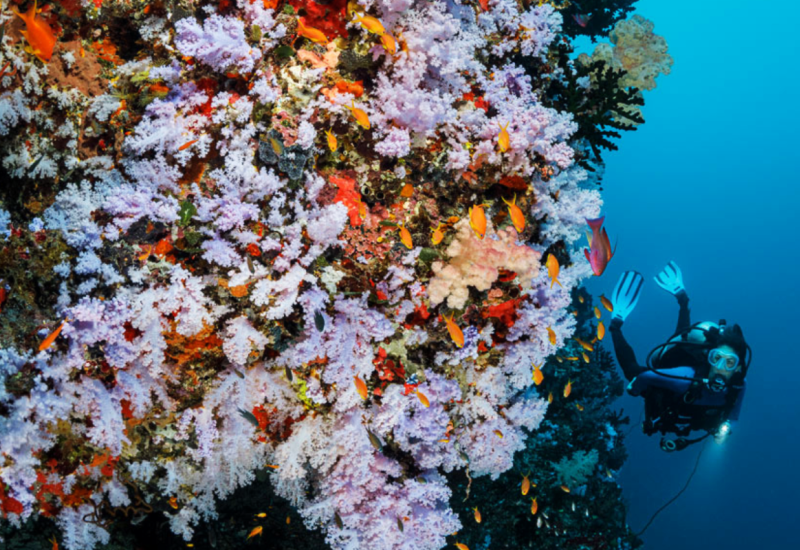Save the Micro Atolls of Cozumel

Michele Westmorland
From the tourist center of the tiny island of Cozumel, I could see the rising skyline of an ever-developing shoreline of Cancun.
It's a mass of humanity and mega resorts that are spreading like a virus to its little island neighbor: Cozumel. Cozumel has its own shoreline resort and hotel development on the western side of the island. But on the eastern shore, it is still pristine and beautiful. How long will it last before the hungry developers begin to consume this quiet side of Cozumel?
In 2009, ILCP conducted a RAVE (Rapid Assessment Visual Expedition) in Yucatan. ILCP photographers, Roy Toft and I, along with Our World-Underwater Rolex Scholarship winner Myfanwy Rowlands were assigned to look at environmental issues impacting the island of Cozumel. While Myfanwy and I worked together on marine life areas, Roy Toft covered the terrestrial wildlife that flourishes on the island. What we encountered was both inspiring and disturbing.
A few key residents of Cozumel are particularly and laudably involved in conserving its marine resources. Cozumel's National Park researchers carefully monitor the health of the reefs and community members are assigned to protect the turtle habitats. As one of their duties, these dedicated individuals are charged with educating the younger generation about the importance of saving their delicate environment. Since the RAVE, I have been back to the island twice. Despite Cozumel conservationists' best efforts, my visits have only intensified my concerns for protecting the last pure areas of the island.
The rumors and discussions between the locals are increasing and heated. Residents want to know: will a proposed development named Punta Arrecifes be approved, and will it destroy the beautiful northeast corner of the island where birds nest and delicate reefs known as micro-atolls exist? These micro-atolls represent a micro ecosystem that occurs only rarely worldwide, and nowhere else in the Western Caribbean. Such limited and specialized systems usually occur within very narrow survival parameters. Even minute changes can bring about irreversible damage.
Inland from these atolls exist wetlands and lagoons that host a large population of birds -- all there to nest and coexist with other land animals. The lagoons and mangroves are full of juvenile fish species waiting to mature and populate the open reef areas surrounding the island. This area is all that is left of Cozumel to be considered a true wilderness. Exactly what is to be approved for the Punta Arrecifes development is shrouded in mystery. As of September 2011, the plan incorporated a marina, golf course, private air strip and 600 hotel rooms. According to reports, some 12 kilometers of virgin beaches on the northeast corner of the island, all owned by the Barbachano family, is the target. Also involved in the development, according to these reports, is the son of real estate mogul, Donald Trump. But trying to get confirmation is difficult -- the Trump name is being kept out of the discussions. The Trump Organization has refused to respond to any questions, let alone whether they are in partnership with the Barbachano family to pursue the large-scale development. One important question rises to the surface -- "Where are the environmental studies and what has been concluded as to the impact on these significant habitats?" To date, no environmental studies have been presented to the residents of Cozumel.
The project claims to add employment opportunities. While this may be true, it's difficult to understand the benefit to the economy when so many of the existing resorts and hotels are struggling to fill rooms. What loss to the environment and uniqueness of this island would this development initiate? More and more world travelers are seeking these pristine environments and are willing to pay a premium to visit them as such. Any development on this untouched portion of Cozumel could potentially take away this opportunity for future generations.
In addition to the large-scale project, a wind farm has been proposed. This is a clear vehicle for "greenwashing" the real impact of the development. Although establishing a carbon offset in the form of a wind farm sounds admirable, just a few of these big mills in the nesting and migratory bird areas could cause these species to seek other places in their delicate natural cycles.
In October, 2011, I had the opportunity to hear President Calderon address attendees of a travel summit in Chiapas, Mexico. In his speech, President Calderon made a commitment to sustainability and conservation along with economic growth. My immediate reaction was to praise his words in the belief that he will make his last year in office one that will label him as a protector of environmentally sensitive lands in Mexico. That is an honorable legacy to leave for his country. But as politics in our own country has shown, words and promises have failed us.
I am acutely aware of the right any country and its people have to development and economic growth. We all want our people healthy, happy and prosperous. However, it is also our responsibility to be good stewards of our lands. Leaving pristine natural habitats for our children is an honorable charge, and pays social, economic, health and political dividends in the end.
Sign the petition to hold President Calderon to his environmental promises on iLCP.com.
About the author: Michele Westmorland is passionate about conservation and is a Founding Fellow of the International League of Conservation Photographers. Her underwater and cultural photography has gained international recognition.










